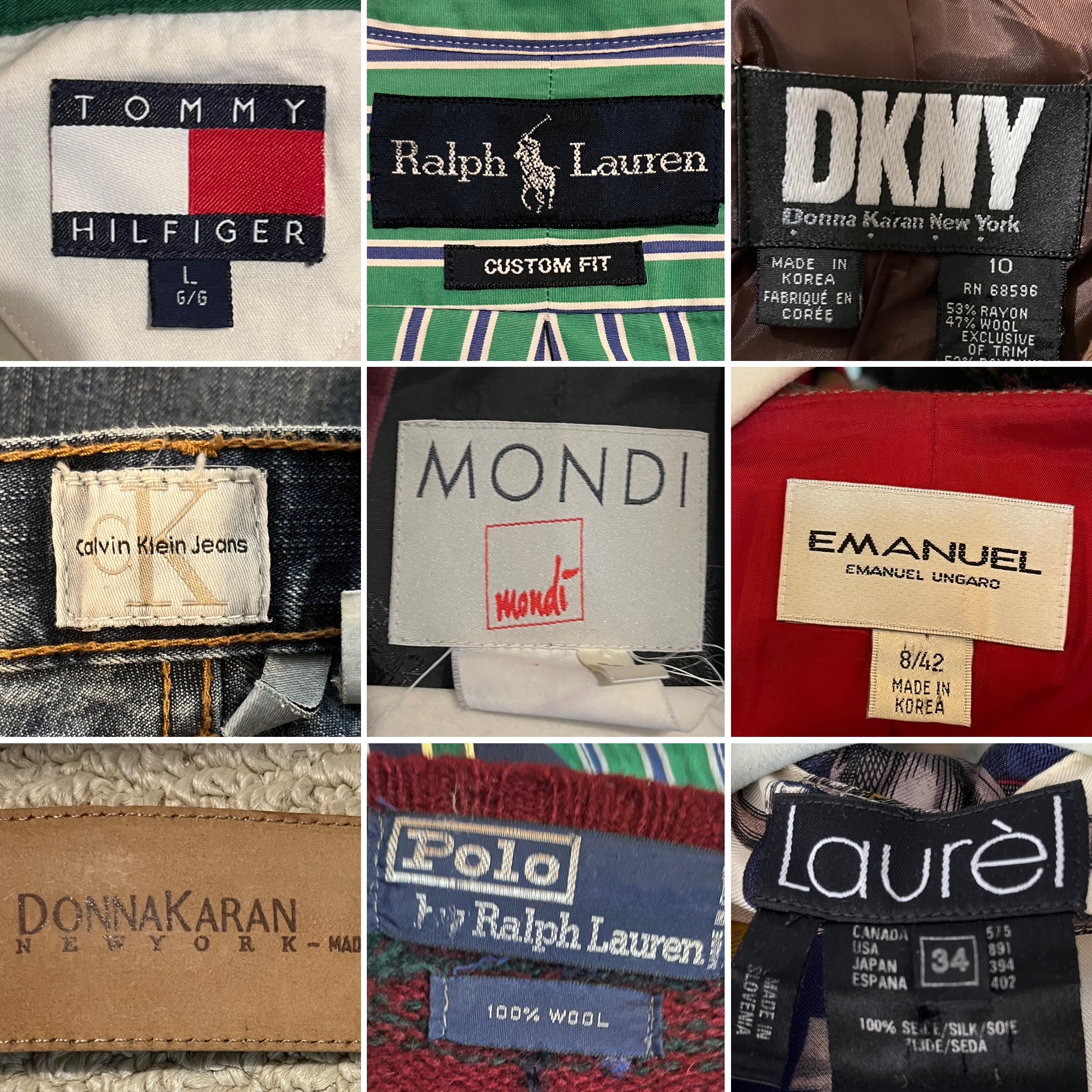Understanding Clothing: The Relevance of Fabric Selections in Your Wardrobe
The selection of material in clothes plays a crucial duty in both aesthetic appeals and performance. Various products supply varying levels of breathability, comfort, and resilience, straight affecting the user's experience. Recognizing these subtleties can enhance one's wardrobe considerably. Several overlook how these options can affect not simply individual style, yet also sustainability. What textile choices could redefine your closet and straighten it with both design and duty?
The Role of Fabric in Style and Capability

Typical Material Types and Their Characteristics
When selecting apparel, recognizing the features of usual fabric kinds is crucial for making informed choices. Cotton, a widely-used natural fiber, is known for its convenience, breathability, and gentleness, making it ideal for informal wear and daily garments. Linen, an additional all-natural choice, flaunts excellent moisture-wicking residential or commercial properties and a distinctive texture, ideal for warm climates.Wool, commonly preferred for its warmth and sturdiness, differs in excellence; merino woollen is soft versus the skin, while coarser kinds are made use of for outerwear. Synthetic textiles like polyester and nylon use toughness and resistance to wrinkles, making them popular for activewear and traveling garments. Blends, which integrate artificial and all-natural fibers, can enhance performance while maintaining comfort. By recognizing these fabric features, people can pick garments that straightens with their way of life and visual choices.
Breathability and Comfort: Selecting the Right Fabrics for Various Environments
Selecting the ideal fabrics for different climates can greatly improve comfort and total wearability. Breathable materials are necessary in warm environments, as they permit air circulation and dampness evaporation. Fabrics such as cotton, linen, and moisture-wicking synthetics efficiently draw sweat away from the body, keeping the user cool and dry. Conversely, in chillier climates, thicker fabrics like wool or fleece provide insulation while keeping breathability, guaranteeing heat without overheating.Additionally, the option of textile weight plays an essential duty; lightweight textiles are more suitable for summer, whereas larger alternatives are fit for winter months wear. Recognizing the special residential or commercial properties of each material allows individuals to dress suitably for differing climate condition. Inevitably, selecting breathable and comfy textiles tailored to details climates can substantially improve day-to-day comfort and improve the total experience of using clothing.
Sturdiness and Treatment: Exactly How Textile Influences Longevity of Your Wardrobe
Picking the appropriate materials can considerably influence the sturdiness and treatment demands of a closet. Fabrics such as cotton and polyester are understood for their durability and convenience of maintenance, making them optimal for everyday wear. On the other hand, fragile materials like silk and shoelace need even more mindful handling and specialized cleaning techniques, which can increase the time and initiative needed for care. Branded Clothing.Durability is also influenced by the material's weave and finish; snugly woven textiles have a tendency to withstand damage better than freely woven alternatives. Additionally, synthetic blends usually supply improved longevity, incorporating the most effective high qualities of multiple fibers.Understanding the treatment guidelines for each textile is essential, as incorrect washing or drying can cause premature wear. Inevitably, choosing sturdy materials can cause a longer-lasting wardrobe, decreasing the frequency of replacements and adding to an extra sustainable fashion selection
The Effect of Fabric on Fit and Shape

Lasting Material Choices: Making Eco-Friendly Choices
The effect of textile expands past fit and shape to encompass environmental factors, motivating an expanding passion in lasting fabric selections. Green materials, such as natural cotton, hemp, and Tencel, are acquiring grip among consumers that focus on sustainability in their closets. These materials are typically generated with less chemicals and water, minimizing their ecological footprint.Additionally, recycled materials, made from post-consumer waste, offer an innovative option to the fabric industry's contamination issue. Brands increasingly accept openness in their sourcing approaches, permitting consumers to make educated choices about their purchases.Choosing sustainable materials not only sustains honest look these up methods however likewise encourages the apparel industry to adopt more accountable production techniques. As awareness of ecological issues rises, individuals are prompted to review the long-term effect of their material options, cultivating a motion towards a more sustainable and environmentally conscious technique to fashion.
Boosting Style: How Material Can Transform an Attire
While several may concentrate on shade and cut when picking a clothing, the selection of textile plays a vital duty in raising style and improving total appearance. Various materials communicate unique state of minds and messages; for instance, silk exhibits high-end and refinement, while jeans offers an informal, relaxed vibe. The appearance and drape of a fabric can drastically change the shape, with structured fabrics supplying a sleek look and softer ones creating an extra fluid, loosened up aesthetic.Moreover, the weight of the fabric affects wearability across periods. Lightweight materials like linen and cotton are perfect for summer, while heavier materials such as wool and velvet offer warmth and beauty in cooler months. Comprehending fabric residential or commercial properties, such as breathability and stretch, additionally empowers individuals to make enlightened selections that improve convenience without compromising style. Ultimately, the best textile can transform a clothing from normal to amazing, making it a vital factor to consider in any kind of closet.
Regularly Asked Questions
How Do I Recognize the Fabric Content of My Garments?
To determine material web content, one can take a look at treatment tags, conduct burn examinations for fiber recognition, or seek advice from textile swatches. These techniques aid distinguish materials, ensuring educated choices for clothing care and upkeep in day-to-day wear.
Can Fabric Selection Affect My Mood or Self-confidence?
Material selection can substantially impact an individual's mood and confidence. Branded Clothing. Specific materials may stimulate sensations of comfort or style, while others can feel unflattering or limiting, eventually affecting self-perception and psychological well-being throughout the day
What Fabrics Are Ideal for Sensitive Skin?
For individuals with sensitive skin, natural textiles like bamboo, cotton, and linen are commonly suggested. These products are breathable, hypoallergenic, and less most likely to cause irritability, making them ideal choices for convenience and skin health.
Exactly how Do I Properly Wash and Take Care Of Different Fabrics?
To correctly clean and care for various materials, one have to take into consideration each product's particular requirements, consisting of temperature level setups, cleaning agents, and drying approaches, guaranteeing longevity and keeping the material's original top qualities for suitable usage.
Exist Certain Fabrics for Athletic or Performance Use?
Sports or performance wear frequently utilizes materials such as nylon, polyester, and spandex. These products are created for moisture-wicking, breathability, and versatility, boosting movement and convenience throughout exercises while supplying sturdiness and support. On the other hand, in colder climates, thicker fabrics like wool or fleece offer insulation while keeping breathability, making sure heat without overheating.Additionally, the selection of textile weight plays a vital duty; light-weight textiles are preferable for summertime, whereas much heavier choices are suited for winter season wear. In contrast, fragile products like silk and lace need more careful handling and specialized cleansing approaches, which can boost the time and effort required for care.Durability is also affected by the textile's weave and surface; firmly woven materials have a tendency to withstand wear and tear better than freely woven alternatives. In comparison, stiff textiles can limit movement but offer a traditional, polished look.Moreover, the density and appearance of the material can affect the visual perception of body shape. The impact of material expands beyond fit and shape to include browse around here ecological factors, prompting a growing interest in lasting material selections. The appearance and drape of a material can drastically modify the silhouette, with organized fabrics supplying a refined appearance and softer ones creating a more fluid, loosened up aesthetic.Moreover, the weight of the textile affects wearability across periods.